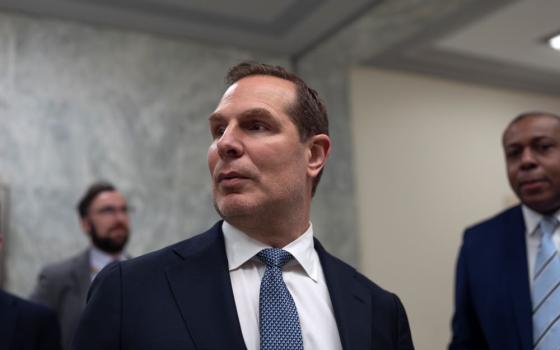If you live in a state with a competitive Senate or House race, you are probably already tired of clicking past the campaign ads that are now swamping the nation’s television screens. The hope that TiVo and other devices would minimize campaign advertising has not come to fruition. And, in the post-Citizens United world of campaign spending and contributions, there is not just more and more advertising but more and more of it is negative.
Chris Cillizza, writing at the Washington Post, highlights data from the Center for Responsive Politics that shows campaign spending this year will come close to $4 billion, the highest amount ever for a midterm election. And, while most of that money will come from the coffers of candidates and the two parties, an astonishing $900 million will be spent by independent groups. Currently, from now until election day, they will be spending $19.4 million per day on the elections. Interestingly, liberal independent groups that are registered as 501(c)3s are slated to outspend conservative ones this election cycle.
The figures above do not include spending by 501(c)4 organizations which, under the rules of Citizens United, do not have to disclose how much they raise, nor from whom. Think Koch Brothers. That could total an additional $100 million, mostly for conservative causes.
Of course, all that money could be better spent fighting Ebola in West Africa, refurbishing bridges and roads here at home, restoring funding for arts and music education in schools. The list goes on. I think all of us, no matter our political affiliation, would not mind seeing that kind of money spent if it resulted in elections in which policy alternatives were more thoroughly examined and we really got to know the candidates for whom we are invited to vote. Or, if the end result was a governing class in Washington that was actually committed to governing. Alas.
One of the problems, detailed in another great WaPo story by Matea Gold this morning, is that because of the restrictions on coordination between independent groups and official campaign committees, almost all of the outside spending is on negative advertising, designed to pull down a political opponent. (This requirement of no coordination between independent groups and a candidate’s official campaign goes back to the Buckley v. Valeo Supreme Court decision in 1976.) If an independent group wanted to produce ads that say nice things about the candidate they support, they would need videotape of her, find out what issues she most wants to highlight, etc., all things that would constitute forbidden coordination. But, it is easy to smear the opponent without any coordination.
In North Carolina, $10.5 million has been spent in positive ads for the Republican challenger, Thom Tillis. $21.3 million in negative ads have been spent against. The numbers for the Democratic incumbent, Sen. Kay Hagan, are $12.9 million and $2.4 million. In Alaska, where ads are cheap, Democratic Sen. Mark Begich has been targeted with $9.5 million in negative ads and his Republican opponent, Dan Sullivan, has been targeted by $7.0 million in negative ads. Only $3.9 million has been spent in positive ads for Begich and only $1.7 million for Sullivan. (I know, I know – “only” $3.9 million.)
Defenders of Citizens United claim that more money means more information and more information means better elections. In the Gold article, Bradley Smith of the Center for Competitive Politics says, “The idea that campaigns are something solely hammered out between candidates and parties is very wrong. There’s nothing wrong with the people saying ‘We want this issue to be addressed.’” Indeed there would be nothing wrong with citizens using their First Amendment rights to demand attention for an important issue. But, that is not how it plays out. I recall working on a congressional campaign ten years ago. Our opponent had a ton of outside money, and the ads they ran trashed my candidate for “not paying his taxes!” That is a serious charge. Their evidence? A few years back, my candidate’s trash bill got lost one month, and because the city picked up the trash, the bill was dubbed a tax by this independent group that ran the campaign, and missing one month – because the bill got lost in the mail or lost in the house – became “not paying his taxes.” Does that edify anyone? Does that demonstrate “the people” clamoring for a specific issue to be addressed?
For all that money being spent, the upcoming election is coming down to two big issues, and no amount of negative ad money will change that. People are worried about national security in the face of ISIS beheadings, fears about the spread of Ebola and, now, the attack in Canada. And, people are worried about an economy that is much better than it was a year ago and vastly better than when the Democrats rode to power in 2008, but which is still sluggish and has not yet yielded increased wages nor lured back the long-term unemployed into the job market. Individual races have particular dynamics that will affect the outcome. Sen. Mary Landrieu looks likely to lose her seat because the ingrates in Louisiana do not know how much federal money she has gotten for her state. Sen. Mark Udall may lose his seat in Colorado because he thought access to free contraception was a burning issue in his state. But, overall, the economy and national security are dominating the focus of the electorate this year. And, here is where the negative advertising have their most insidious effect. After hearing, day in and day out, for weeks, that they are all bums, why would anyone think government might be a useful tool for addressing income inequality, or public health infrastructure, or job growth. The liberal groups may reach parity in spending with conservative ones, but they are all sending a negative message that plays to the most base instincts of the electorate. And, that helps the anti-government party in every election.




